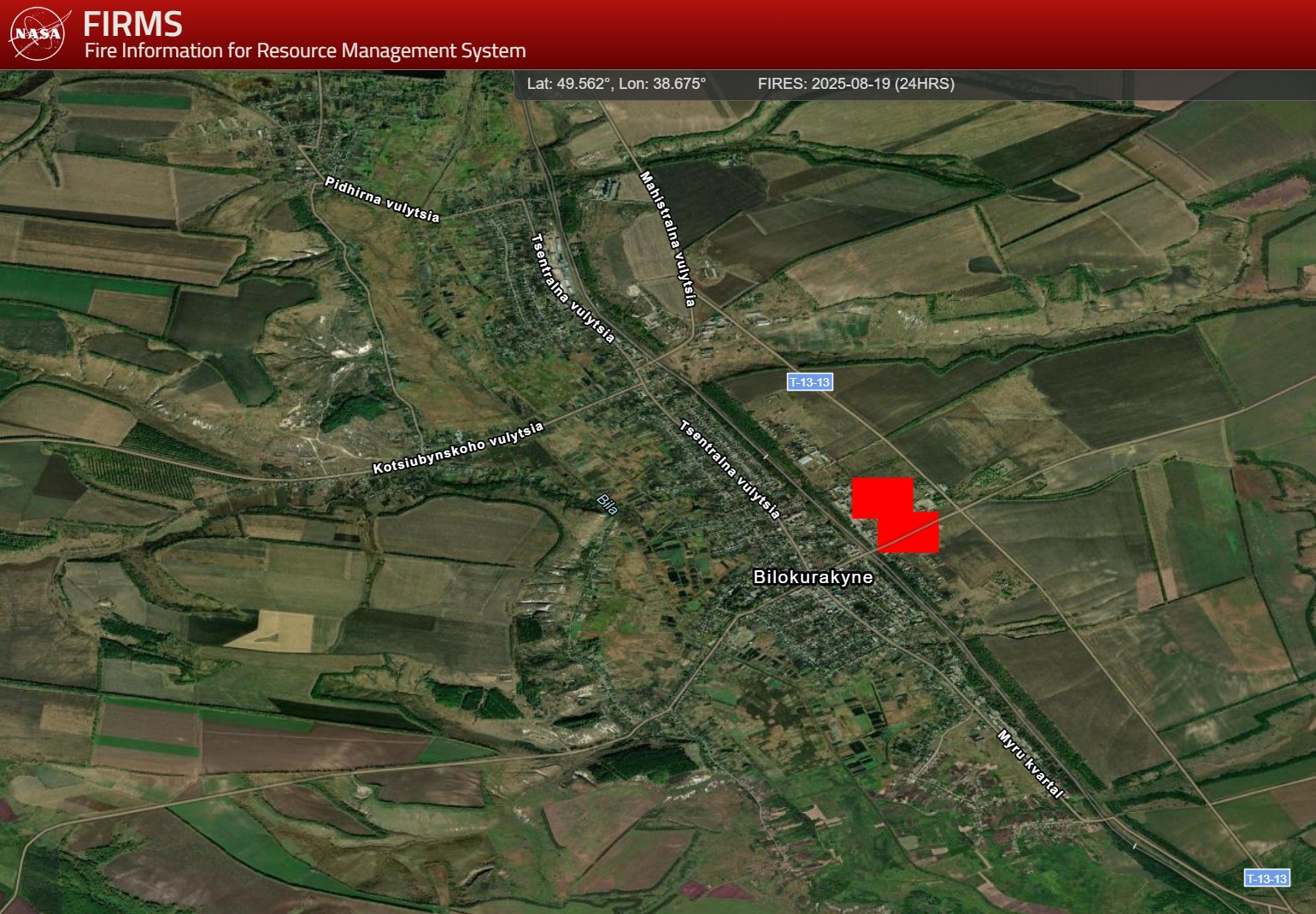Ukrainian Security Service drones obliterated two Russian ammunition depots in occupied Bilokurakyne on 19 August, triggering massive fires visible from space and severing a critical supply artery feeding Moscow’s Pokrovsk offensive.
The nighttime strike landed seven direct hits on the rail and road hub, 60 kilometers behind Russian lines in Luhansk Oblast. NASA satellite data confirmed multiple thermal anomalies, marking another successful penetration of Russia’s supposedly secure rear areas.
The targeted settlement is a crucial logistics node where railways and roads converge to supply Russian forces grinding toward Pokrovsk in Donetsk Oblast.
By destroying ammunition stockpiles at this junction, Ukrainian forces force Moscow to find longer, more vulnerable supply routes or accept reduced firepower at a critical front.
This attack represents Ukraine’s evolved battlefield strategy — rather than matching Russia shell for shell, Kyiv systematically dismantles the infrastructure sustaining Russian operations. Each depot eliminated means fewer artillery rounds reaching Ukrainian positions.
“The SBU continues to launch systematic strikes against the enemy’s rear in order to reduce the offensive capabilities of the Russian army on the front line,” the agency stated.
The Bilokurakyne strike coincided with a third fire recently at Lukoil’s Volgograd refinery, illustrating how Ukraine’s campaign now spans from ammunition depots to energy infrastructure. This coordination suggests sophisticated operational planning designed to strain Russia’s war economy simultaneously on multiple fronts.
These operations demonstrate how precision technology allows smaller militaries to offset numerical disadvantages.
Ukraine’s success in penetrating Russian-controlled territory with relatively inexpensive drones offers lessons for defense planners worldwide facing similar asymmetric challenges.
The burning depots in Bilokurakyne represent more than tactical success – they show how sustained pressure on supply networks can degrade even a larger military’s operational capacity.




